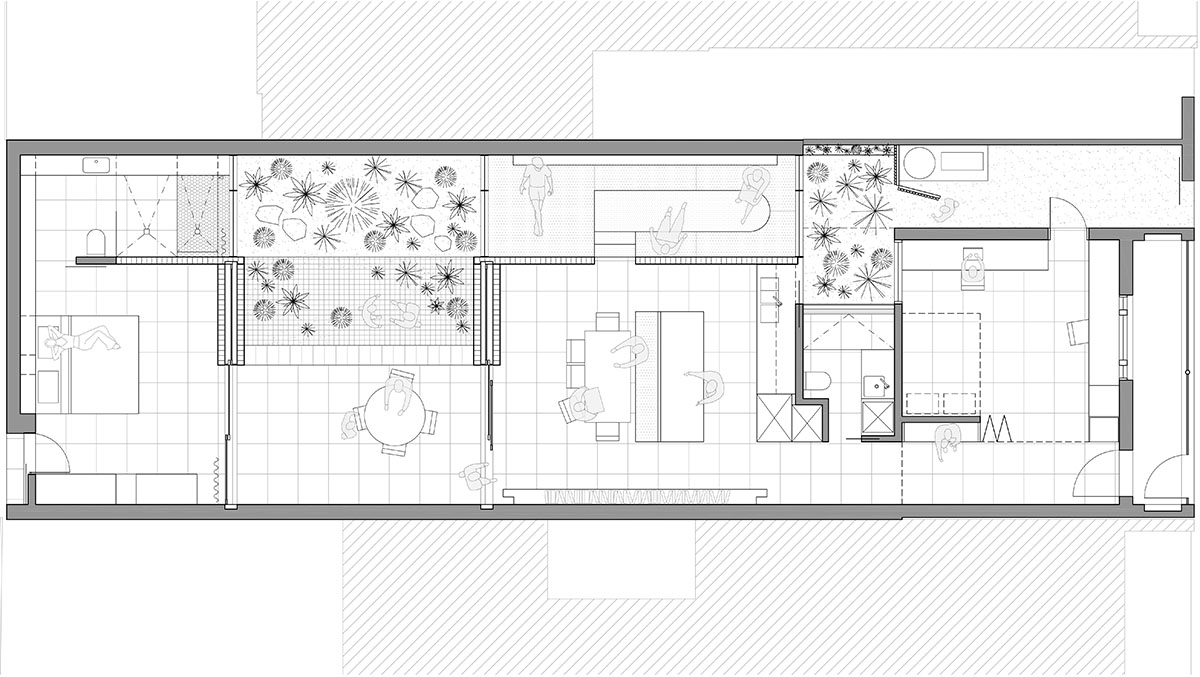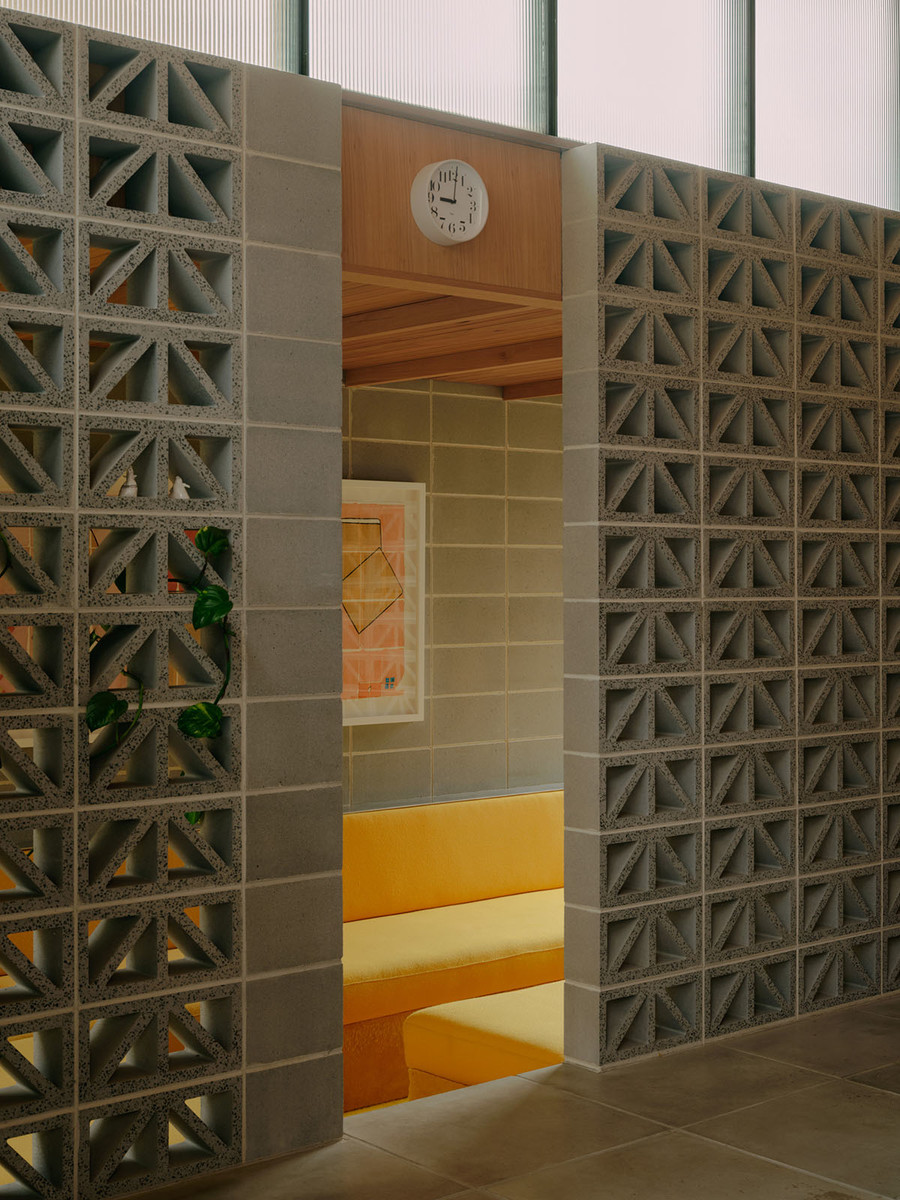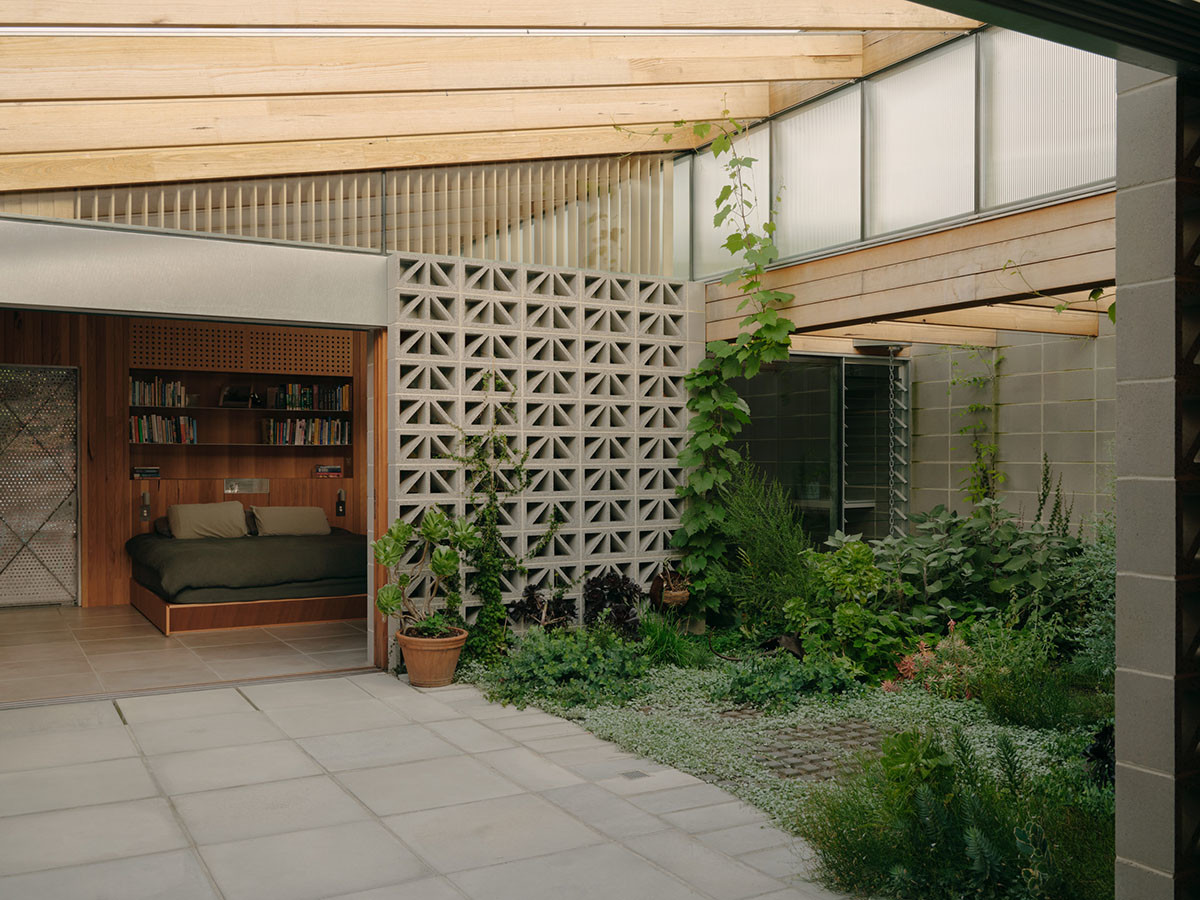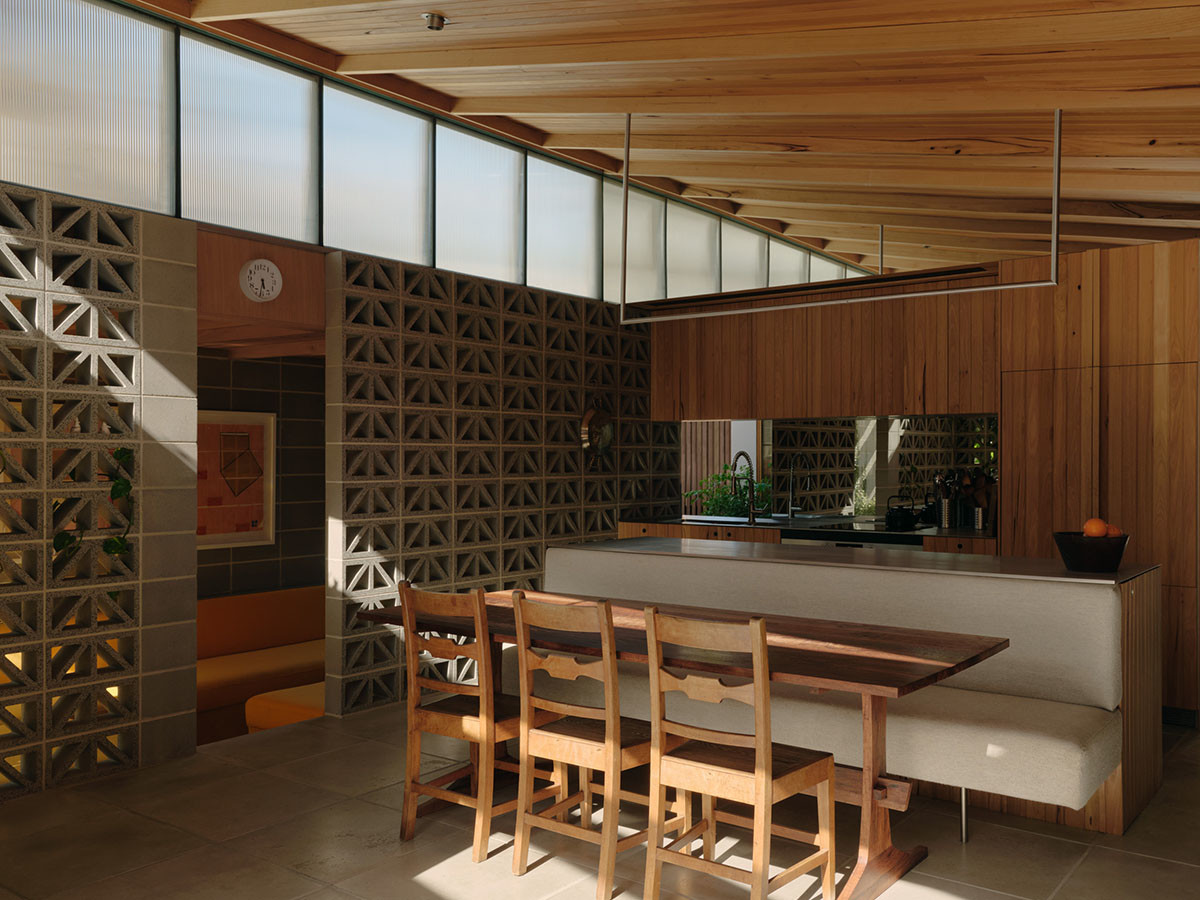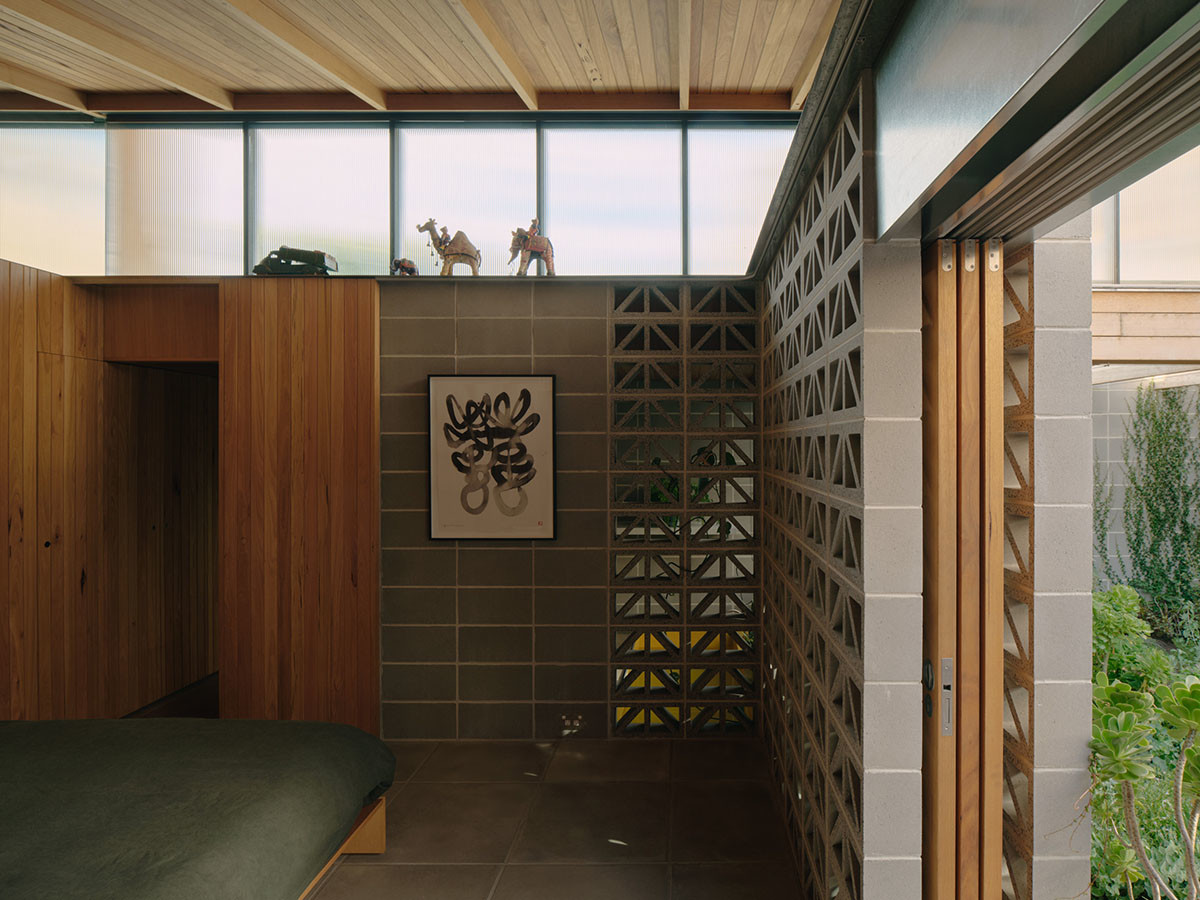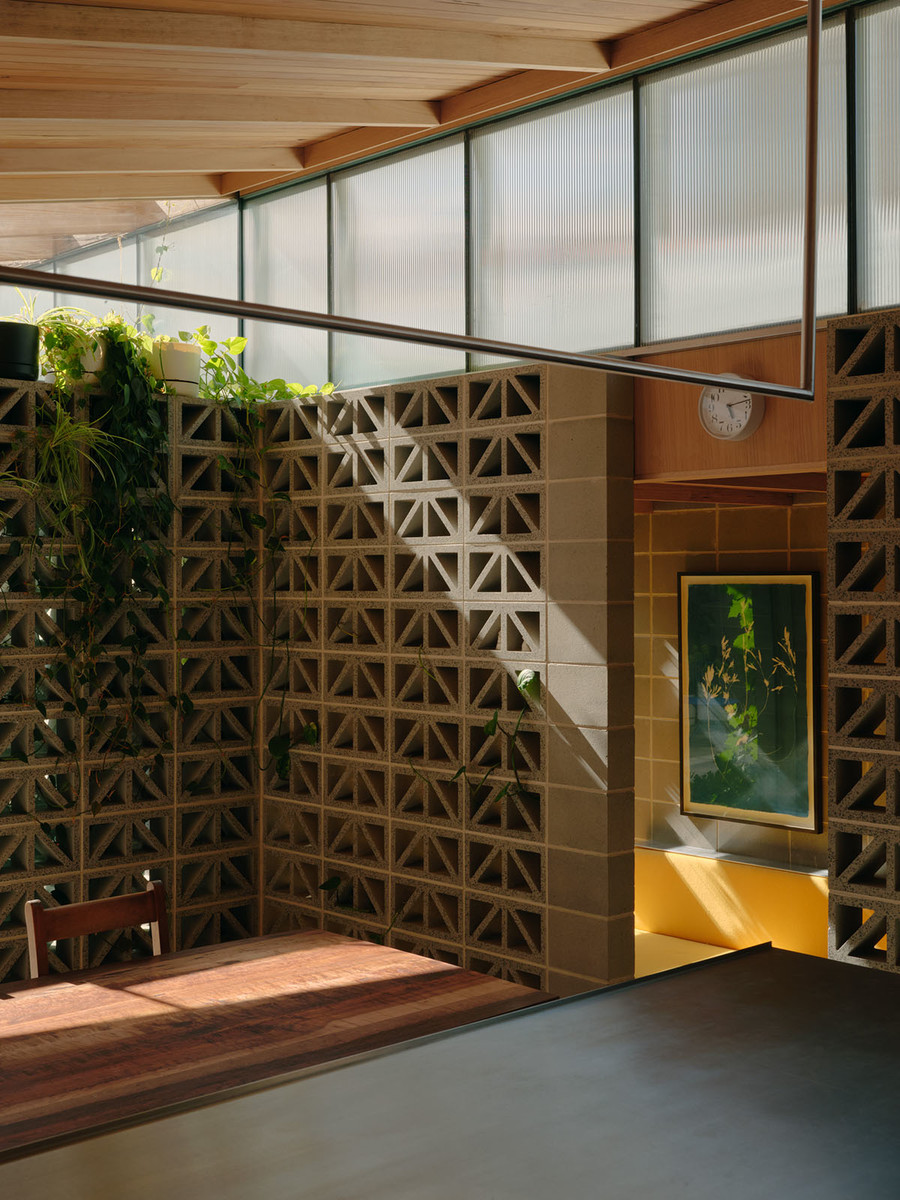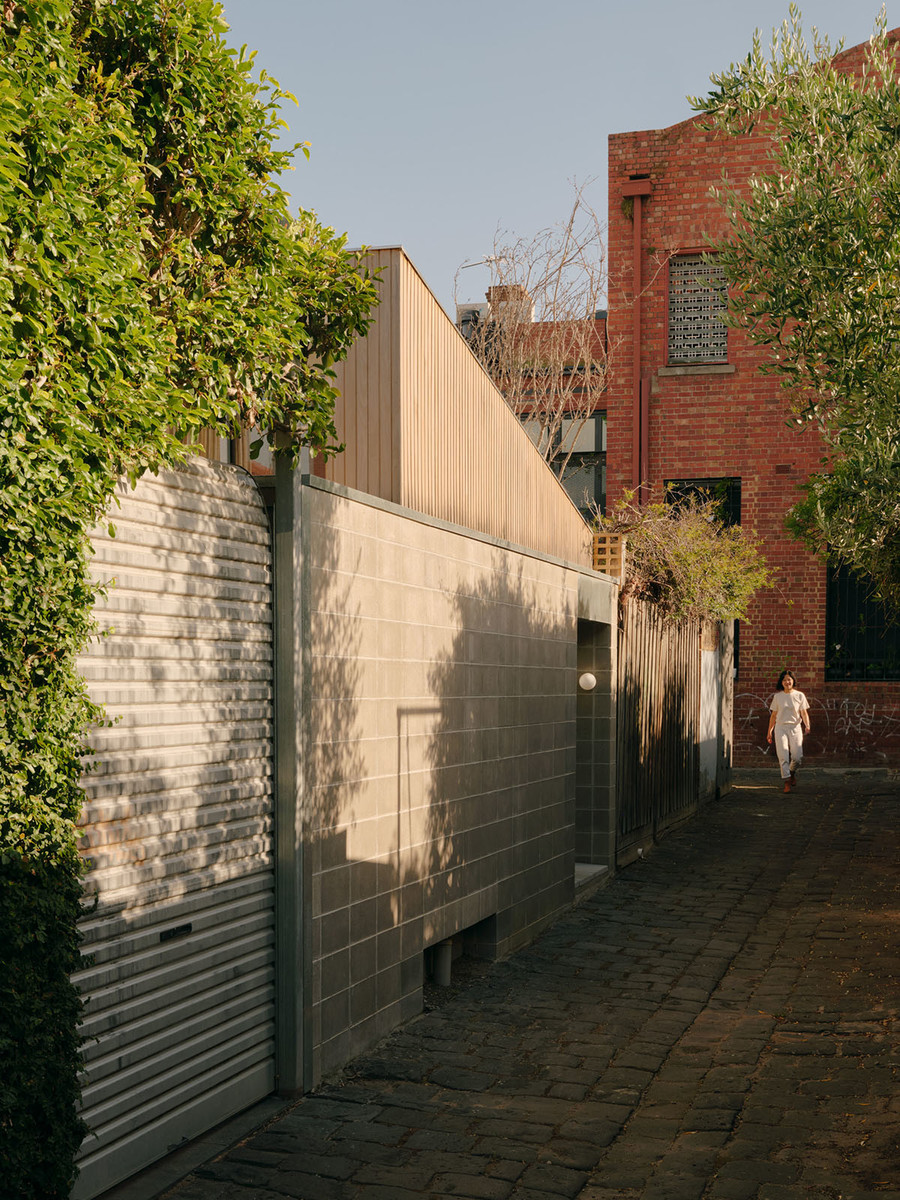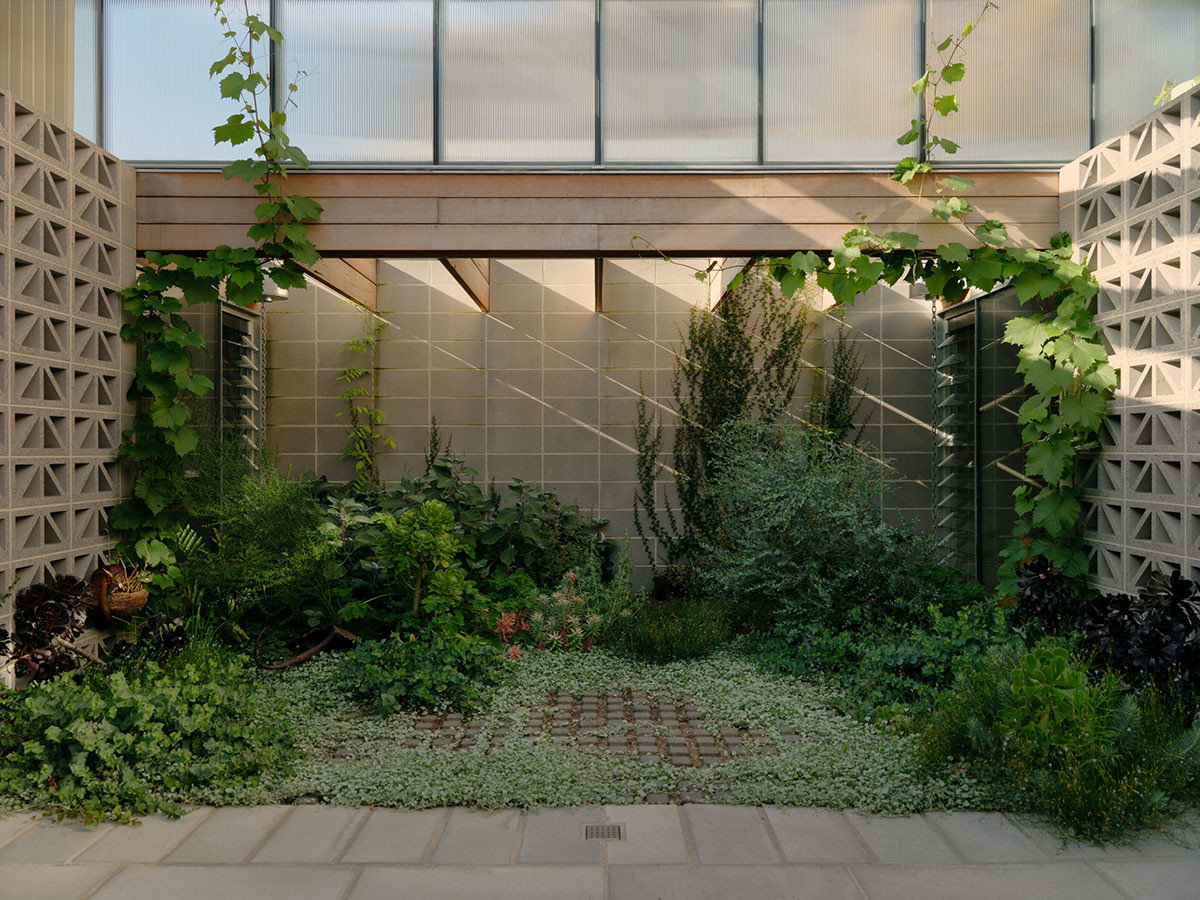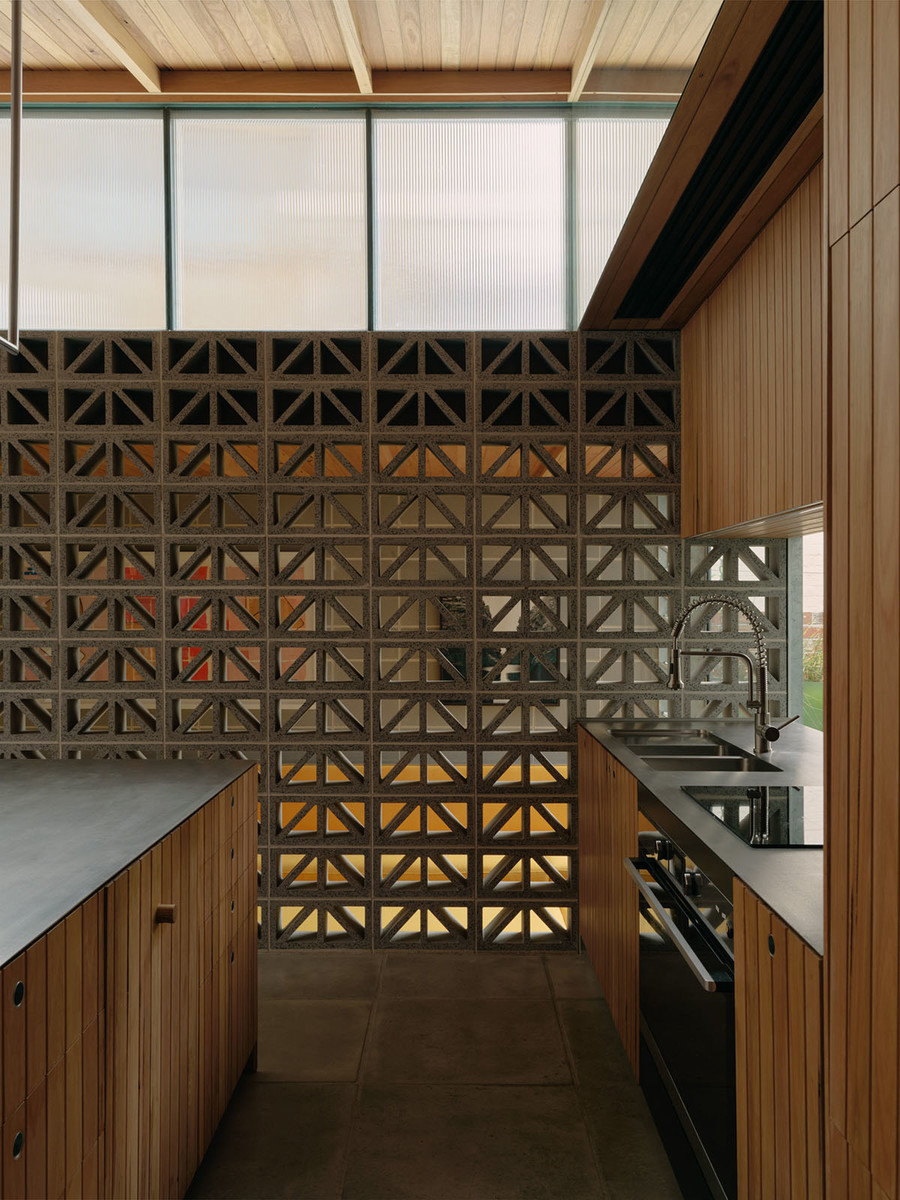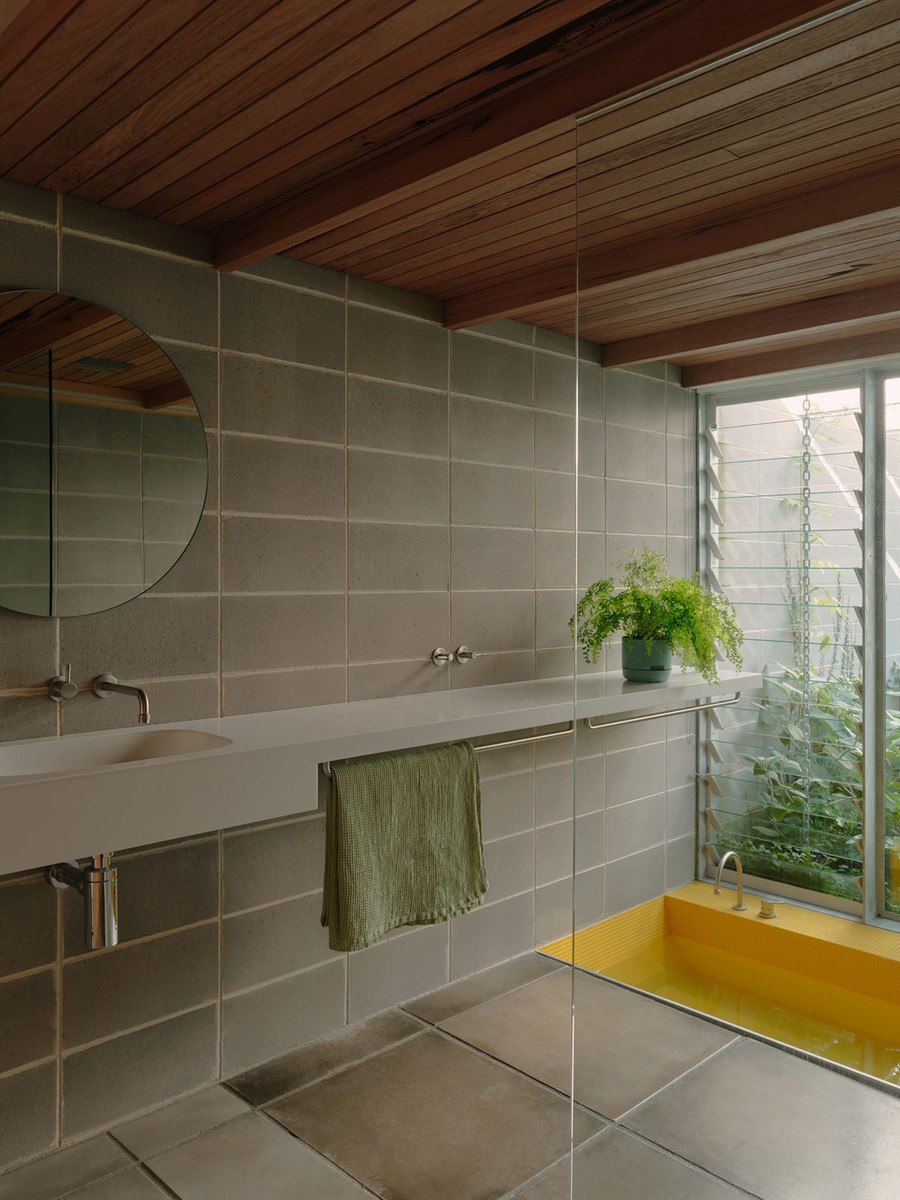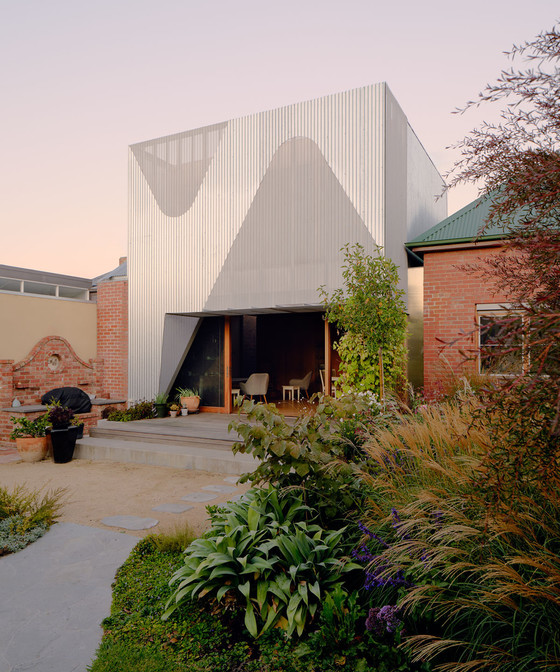Sunday
Sunday is a home for physical and psychological well-being, providing a diversity of spaces where occupants can always find a place of comfort: social spaces and private spaces; generous spaces and intimate spaces; spaces to gather and spaces to retreat.
| Location | Fitzroy |
| Completed | 2022 |
| Budget | $985,000 |
| Awards | 2023, National Architecture Awards, Eleanor Cullis-Hill Award |
| 2023, Victorian Architecture Awards, John & Phyllis Murphy Award | |
| 2023, Houses Awards, winner | |
| 2023, Home Of The Year Awards, home of the year | |
| 2023, Home Of The Year Awards, best renovation | |
| 2023, Thinkbrick Awards, high commendation | |
| Construction | Grenville Architectural Construction |
| Landscape | Amanda Oliver Gardens |
| Photography | Tom Ross |
| Media | video with interview |
| The Local Project | |
| Houses Magazine | |
| The Design Files | |
| Details | See floorplan |
Establishing a spectrum of spatial conditions on a site of just 175m2 is a challenge, and one that has defined the DNA of this project. The extension has been zoned into three north-south bands, establishing the main realms: communal, outdoor and private. Two east-west bands further divide each of these realms into two zones: generous and intimate. Chequering the plan in this way gives rise to a spectrum of conditions: communal/generous, communal/intimate, outdoor/generous, outdoor/intimate, private/generous, private/intimate.
These qualities are further reinforced by the ceiling plane: lofty and raked over the generous zones; low and flat over the intimate zones, where space is contained and bodily. This geometry is continuous across the length of the extension, with expressed beams, clerestory glazing and concrete pavers connecting the communal, outdoor and private realms in a single gesture. This has the effect of establishing the courtyard as an outdoor room, continuous with the adjacent indoor spaces. Colour further reinforces the idea, with a sunken lounge and sunken bathtub both rendered in warm yellow, connecting them across the garden.
Given the small size of the site, concerns of ‘separation’ and ‘connection’ are key. Breeze-block walls demarcate the various zones of the house, yet permit light, breeze and glimpse views. Similarly, north facing clerestory windows permit abundant light while their obscure glazing conceals views of the neighbouring two storey house that would otherwise loom over the property.
Accessing the bedroom requires walking across the open-air courtyard, providing a deliberate retreat from the house – a valuable gesture on a site where separation of zones is challenging. In this way, retiring for the evening is a more considered ritual. Similarly, occupants are more conscious of the weather, which plays a role in the daily experience of home life: wet weather requires a quick dash across the courtyard; warm weather permits the doors to be thrown open, connecting the two halves of the house. While this arrangement wouldn’t suit everyone, the decision to forego a connecting hallway on a site of this size is hugely beneficial, maximizing natural light, ventilation and garden aspect for both sides of the house.
Materially, natural textures have been brought to the fore, with minimal surface treatments allowing the house to develop its own patina with time. Our clients have an interest in the works of Geoffrey Bawa and one was raised in a Paul Couch house, establishing in them an affinity for robust materials, muted palettes, clear geometries and spaces sculpted by light. And yet, our clients also have a love of yellow, inspired by Luis Barragan’s bold colours. Both influences have been formative in the design of our clients’ new home.
We live in our whole house now, inside and out. Before, there were whole rooms of the house we barely entered – now, the house feels like a single continuous space, every corner of which has both purpose and beauty. We gave the team at Aa a handful of loose bits of inspo and disconnected thoughts, and they have made something that feels so specific to us that it’s like we dreamed it into existence.
Sophie and Virginia
